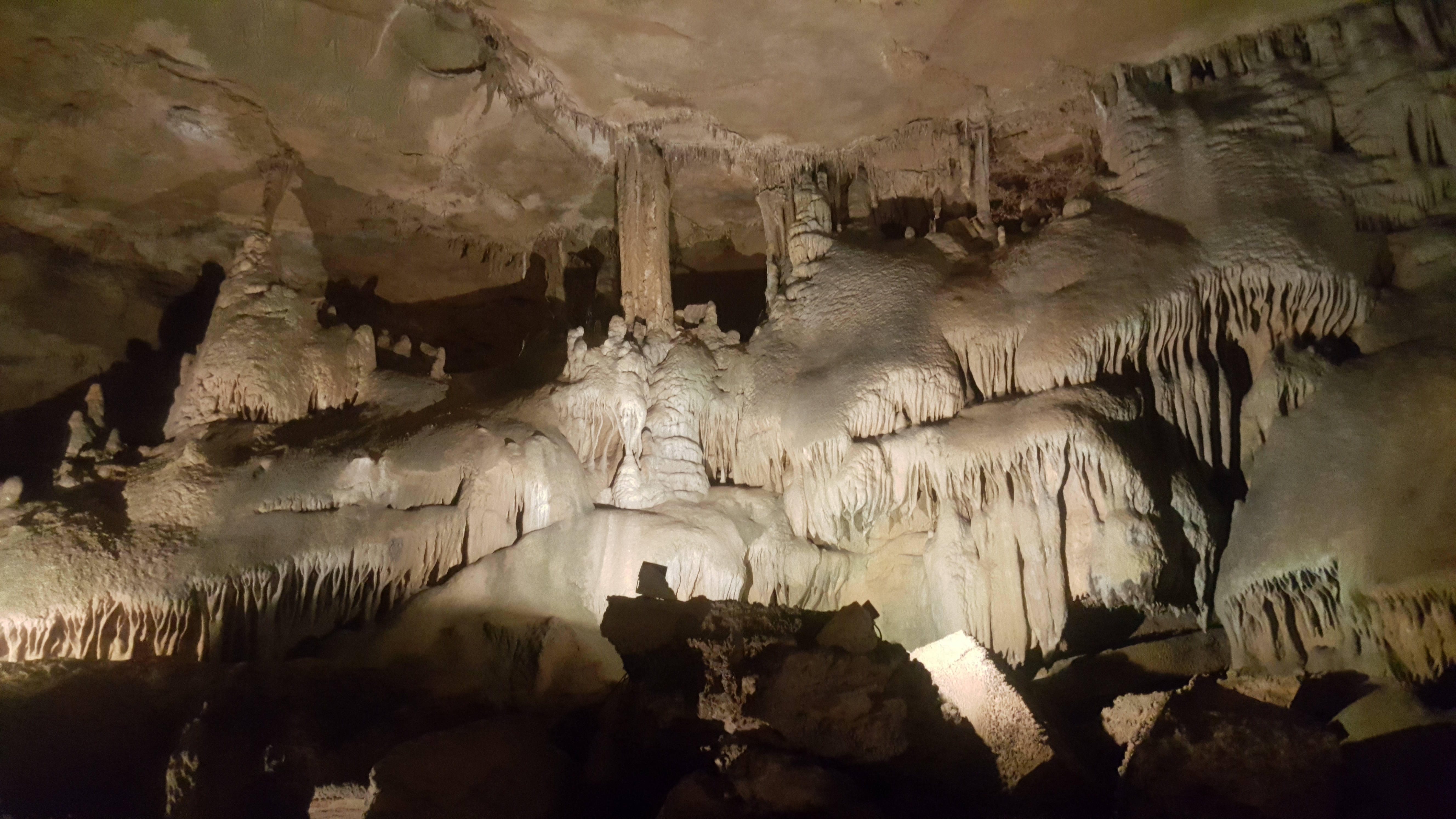Raccoon Mountain Caverns on:
[Wikipedia]
[Google]
[Amazon]
 Raccoon Mountain Caverns is a cave located in
Raccoon Mountain Caverns is a cave located in
 Raccoon Mountain Caverns is a cave located in
Raccoon Mountain Caverns is a cave located in Chattanooga, Tennessee
Chattanooga ( ) is a city in and the county seat of Hamilton County, Tennessee, United States. Located along the Tennessee River bordering Georgia, it also extends into Marion County on its western end. With a population of 181,099 in 2020, ...
in a band of Mississippian Period
The Mississippian ( , also known as Lower Carboniferous or Early Carboniferous) is a subperiod in the geologic timescale or a subsystem of the geologic record. It is the earlier of two subperiods of the Carboniferous period lasting from roughly ...
limestone, part of the Cumberland Plateau
The Cumberland Plateau is the southern part of the Appalachian Plateau in the Appalachian Mountains of the United States. It includes much of eastern Kentucky and Tennessee, and portions of northern Alabama and northwest Georgia. The terms "Alle ...
.
The cave was officially discovered in 1929 by Leo Lambert, a local caver who had recently discovered and opened Ruby Falls
Ruby Falls is a series of underground cascading waterfalls totaling in Lookout Mountain, near Chattanooga, Tennessee, in the United States.
Geology
About 200 to 240 million years ago (in the Carboniferous Period, at the end of the Paleozoic E ...
, although legends exist of previous entry years earlier. Prior to Lambert's arrival, the property was owned by the Grand Hotel and used as a farm for their restaurant. On hot afternoons, it was said that the farmers would relax in front of several cracks in the rock at the base of the mountain and enjoy the cool air that was blowing out. In 1929, Leo Lambert was invited to explore the source of the air. As an experienced cave explorer, Lambert realized that in order for air to blow out of a crack in limestone
Limestone ( calcium carbonate ) is a type of carbonate sedimentary rock which is the main source of the material lime. It is composed mostly of the minerals calcite and aragonite, which are different crystal forms of . Limestone forms whe ...
rock, there must be a large cave beyond the crack to supply such a volume of air. Lambert enlarged the cracks and was rewarded by discovering several hundred feet of well-decorated cave passage in a cave that was close to U.S. Highway 41. He developed a series of trails, installed electric lights, and opened the cave to the public as "Tennessee Caverns" on June 28, 1931.
The original tour, now known as the Lambert Tour, circled the Crystal Palace Room which was believed to be the largest room in the cave. Some twenty years after its opening, the Smith Brothers were managing the cave and discovered a small hole just off the Crystal Palace Room. The opening pinched down to 7.5 inches, so tight that the explorers had to exhale so they could squeeze through the gap. Less than twenty feet later, they found that the passage opened into a larger room and continued their discoveries. Eventually, they were able to enlarge the tour to include these newly discovered areas. Today, this ~0.5 mile loop tour is known as The Crystal Palace Tour. Spelunking tours known as Wild Cave Expeditions, were added in the 1970s, allowing visitors to visit the undeveloped areas of the cave beyond the commercial section. To date, over 5.5 miles of passageway has been discovered and mapped, with new discoveries still being made.
Over the years, the name of the cave was changed from Tennessee Caverns to Crystal City Caves to Crystal Caverns and eventually to its current name, Raccoon Mountain Caverns in the late 1970s. Today, the property is also home to a campground with full service RV sites, water and electric sites, primitive tent sites, and cabins.
The cave is known for its high level of active speleothem
A speleothem (; ) is a geological formation by mineral deposits that accumulate over time in natural caves. Speleothems most commonly form in calcareous caves due to carbonate dissolution reactions. They can take a variety of forms, depending on ...
growth, fossils, and resident wildlife. In addition to several salamander species, the cave is home to a unique spider species referred to as the Crystal Caverns Cave Spider (''Nesticus furtivus
''Nesticus furtivus'', the Crystal Caverns cave spider, is a species of true spider in the family Nesticidae. It is found only in Raccoon Mountain Caverns, formerly Crystal Caverns, a commercial cave in Chattanooga, Tennessee
Chattanooga ...
).'' This species, discovered initially in 1938, and officially described in 1984, is only known to exist within Raccoon Mountain Caverns.
Raccoon Mountain Caverns is a major tourist attraction and is one of two caves in the Chattanooga
Chattanooga ( ) is a city in and the county seat of Hamilton County, Tennessee, United States. Located along the Tennessee River bordering Georgia, it also extends into Marion County on its western end. With a population of 181,099 in 2020, ...
/ Hamilton County area that is open to the public.
References
External links
* Caves of Tennessee Landforms of Hamilton County, Tennessee Show caves in the United States Tourist attractions in Hamilton County, Tennessee {{HamiltonCountyTN-geo-stub